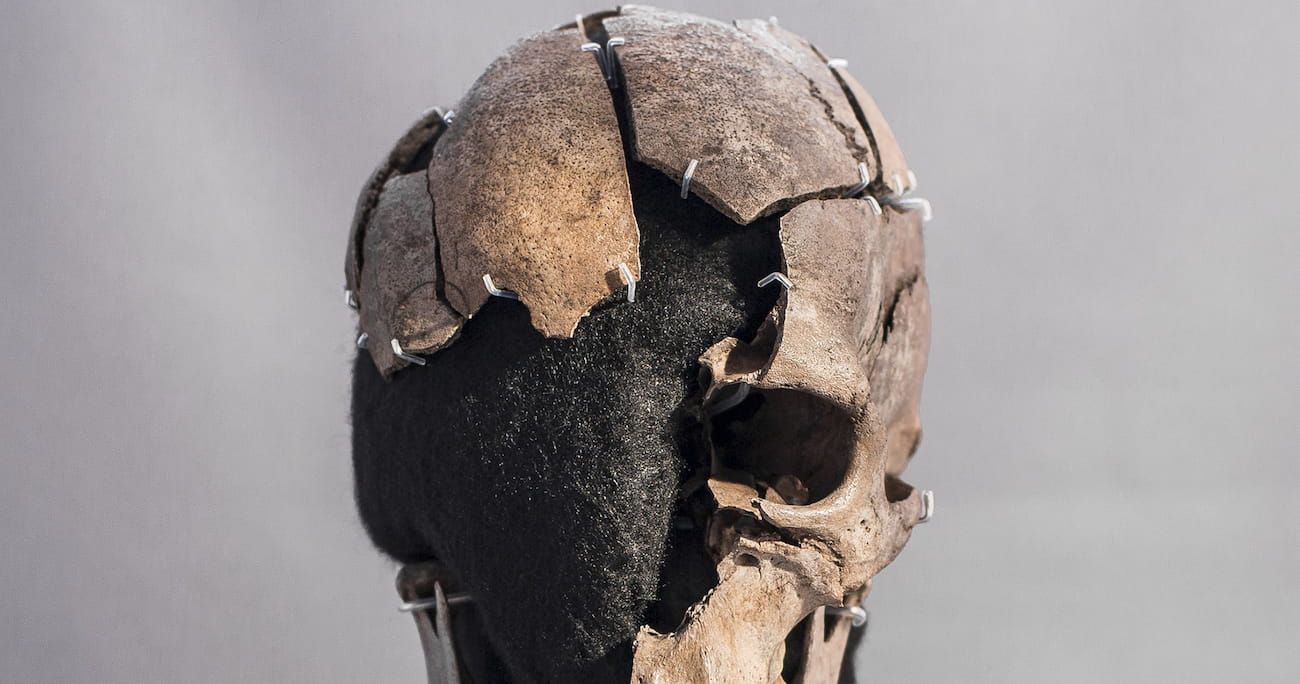Scientists have used new scientific methods to create detailed biographies of the lives of Stone Age men. A Swedish-Danish research team at the University of Gothenburg has announced that they have traced the travels of the “Wittlap Man” whose body was discovered in a swamp in Denmark.
The Wittlap Man was discovered in 1915. His skull was fractured by at least eight blows to him, and his body was placed in a peat bog in northern Jutland. Until recently, this was all that was known about him. Researchers now report that he traveled extensively before his death around 3200 BC. He seems to have had an eventful life.
He comes from the north, a relatively cold coastal region, and his childhood diet included seafood.explains archaeologist Karl-Göran Sjogren of the research team. Researchers believe he grew up in what is now northern Norway.

However, when he was 18 or 19 years old, for reasons unknown, he ended up in Denmark. His diet then changed from seafood to locally produced produce.
He lived in a rural village in Denmark for 10 to 20 years until his tragic death.says Sjögren. By analyzing his tartar, teeth and skull isotopes, researchers were able to track his geographic and dietary changes from birth to death. They believe this is the first time that an individual’s entire life span from this distant past has been mapped in such detail.
The study, published in PLOS ONE, is part of a broader study analyzing genomic and DNA data from prehistoric Nordic populations, recently published in Nature. The Nature study examined DNA and dietary markers in 100 teeth and bone fragments from Denmark.

Wittrup Mann was among them. His genome is markedly different from other Danish Stone Age people, indicating a close relationship with contemporary groups in Scandinavia. This motivated a detailed study of his origins and life.
Isotope analysis of the man’s teeth and bones confirmed his non-local origin. Questions remain as to how he ended up in Denmark or what was the cause of his unnatural death, but archaeologists believe he was buried in a ritual based on similar customs of the time. He theorizes that he may have been sacrificed.
This new technology reveals unprecedented insights into the lives of individuals thousands of years ago, demonstrating the growing power of scientific methods to uncover the untold stories of prehistory.

source of information
University of Gothenburg | Fischer A, Sjögren KG, Jensen TZT, Jørkov ML, Lysdahl P, Vimala T, et al.. (2024) Vittrup Mann – Life history of genetic aliens in Neolithic Denmark. PLoS ONE 19(2): e0297032. doi.org/10.1371/journal.pone.0297032









